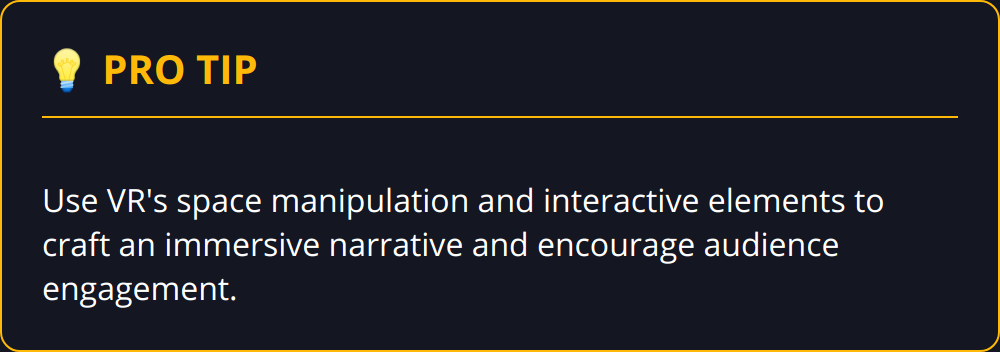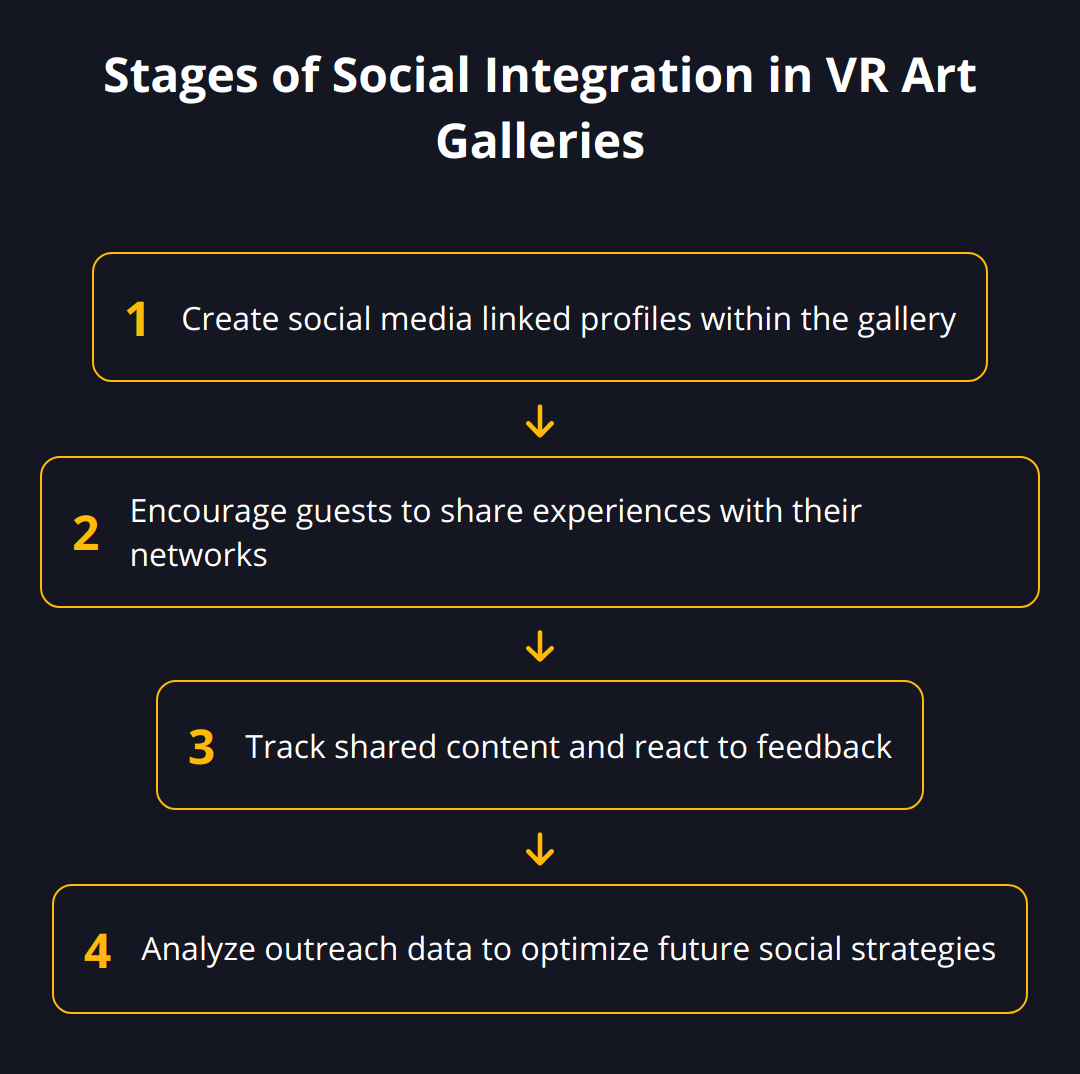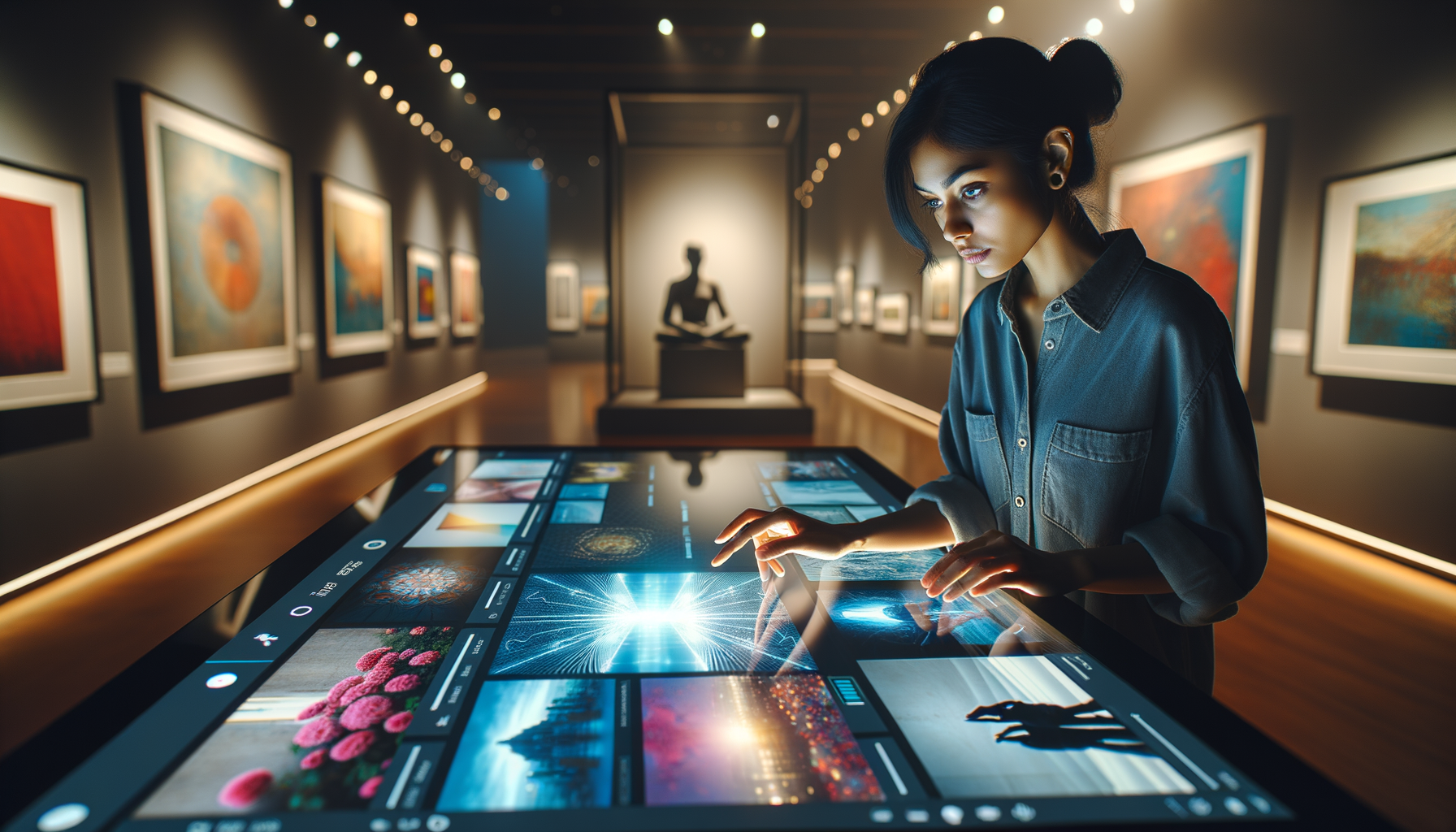Welcome to a transformative world where art meets immersive technology. We at newroom connect are dedicated to guiding newcomers through the vibrant landscape of Art Gallery VR Showcases.
In this guide, you’ll discover the ins and outs of virtual reality as it revolutionizes the way we experience art. Step into the future of art showcasing with practical advice that prepares you for your own virtual exhibition.
Exploring VR in Art Galleries
Virtual reality (VR) is transforming art galleries into boundary-pushing spaces of digital expression. Not only does it offer artists and curators unprecedented ways to present their work, but it also delivers a unique, immersive experience to viewers.

The Advantages of Virtual Art Galleries
One of the standout benefits of VR art galleries is accessibility. Viewers from anywhere in the world can explore exhibits without physical constraints, bringing global exposure to artists. Furthermore, interactive VR elements enrich the visitor’s experience. Users can closely inspect textures and techniques or view pieces in various settings and lighting conditions, going beyond what’s possible in a physical gallery.
Additionally, virtual galleries are cost-effective, both for creators and consumers. They eliminate logistical expenses like insurance, transportation, and physical space rental. From an attendee’s perspective, they save on travel costs and entry fees.

Popular VR Technologies for Showcasing Art
A range of technologies power VR art showcases. Some of the popular ones include head-mounted displays (HMDs) such as Oculus Rift, HTC Vive, and Google Cardboard, which cater to different budget and quality preferences. For instance, Google Cardboard is an affordable entry point for those just beginning to explore VR, while Oculus Rift offers a more sophisticated, high-resolution experience.
360-degree videos and fully navigable 3D spaces give a real-life feeling to virtual galleries. Artists and galleries on platforms like ARTDEX leverage tools that allow viewers to virtually walk through exhibits with ease. To host such experiences, platforms provide backend support for uploading and arranging artworks in digital spaces.
Actionables for Creating Your Own VR Art Showcase
-
Choose a VR platform that aligns with your technical capabilities and audience reach. For high-end displays, consider Oculus Rift or HTC Vive, while Google Cardboard can offer a broader, more accessible experience.
-
Consult VR experts or attend workshops to understand the nuances of creating engaging VR content. This might involve understanding the right software to construct your virtual space, such as Unity or Unreal Engine.
-
Capture your artwork in the highest quality possible. High-resolution images and videos ensure that your art is presented in the best light within the VR environment.
-
Market your virtual gallery effectively through social media and online art communities. Platforms that focus on art and technology, such as VR Showroom Experiences Guide, can offer insights into reaching the right audience.
Ultimately, venturing into the VR art gallery space can set you apart and expand your artistic footprint globally. With the advent of technology that’s increasingly intuitive, there’s never been a better time to translate artistic vision into virtual reality.
In the next chapter, we will delve into practical tips for curating your VR art showcase to create captivating and memorable virtual exhibitions.
Setting Up Your VR Art Gallery
Venturing into the virtual space requires a blend of creativity and technical know-how to establish an engaging VR art gallery. Aligning your gallery’s purpose with the right VR platform, ensuring the artwork is VR-ready, and addressing technical details can make your showcase a virtual sensation.
Choosing the Right VR Platform
With a plethora of VR platforms available, select one that caters to your audience and enhances your artwork’s digital presentation. High-end platforms like the Oculus Rift offer a premium experience with superior graphics, ideal for intricate art that demands close inspection. On the other hand, something as accessible as Google Cardboard can democratize your exhibition by reaching a wider audience. Remember, the platform shapes the user’s experience; pick one that aligns with your vision.

Curating Artwork for Virtual Reality
Your audience’s engagement hinges on the artwork’s presentation in the virtual space. Curation in VR goes beyond mere selection; it’s about crafting an immersive narrative. Organize your pieces strategically, leveraging VR’s capability to manipulate space and perspective, guiding viewers through a visual journey. Integrate interactive elements to encourage viewers to interact with the art, such as allowing them to reveal an artwork’s backstory or view it in different environmental contexts.

Technical Considerations for a Smooth Experience
Technical smoothness is non-negotiable for maintaining the magic of VR. High-resolution images are mandatory; they ensure clarity and detail when viewed through VR headsets. Moreover, optimize the user interface for intuitive navigation and minimal latency, ensuring viewers have a seamless experience. Regular tests across different devices will highlight areas for improvement.
Implementing an exceptional VR art gallery requires attention to several details:
-
Seamless headset compatibility ensures no viewer is left behind.
-
Crystal-clear visuals bring out the nuances of each piece.
-
Intuitive design invites users to explore effortlessly.
-
Constant iteration refines the user experience.
In conclusion, succeeding in the virtual art world is not just about replicating a physical gallery in VR. It’s about reimagining the space to optimize the art’s display and interactivity, providing a mesmerizing experience that compels viewers to return.
Follow these steps to create a virtual showcase that stands out in the digital sphere and captivates audiences across the globe. And as you continue to develop your skills, take advantage of expert resources like VR Showroom ROI Tips, which provide valuable insights for maximizing your virtual gallery’s impact.
Onward to the next chapter, where we’ll go beyond the basics and explore advanced strategies for promoting and enhancing your VR art gallery showcase.
Maximizing Interaction in VR Art Galleries
When creating an Art Gallery VR Showcase, your priority is to engage the audience fully. You want visitors to leave feeling connected, not just to the art but to the virtual world you’ve crafted. Focus on maximizing interaction – this is where the real magic happens.
Essential Tips for First-Time VR Users
If you’re new to the realm of VR showcases, start with the basics to build a solid foundation for your virtual experience. Here are actionable pointers:
-
Familiarize Yourself with the Headset: Spend time understanding how your chosen VR equipment operates. Comfort with the technology translates to a smoother experience for users.
-
Offer Clear Instructions: Ensure that your visitors know how to navigate your virtual gallery. Simple, concise guidance can significantly enhance user satisfaction.
-
Choose Comfortable Settings: Avoid settings that may cause disorientation or discomfort. User comfort is key in making VR a pleasant experience.
Crafting an Interactive Art Environment
Interactivity is crucial for a memorable VR experience. Here’s how to make it happen:
-
Provide Multiple Viewpoints: Allow users to view artwork from different angles and distances.
-
Include Engagement Triggers: Add elements that visitors can click on to learn more about the art or artist.
-
Create Dynamic Elements: Consider animations or changes in lighting to draw attention to specific pieces.
Leveraging the Social Power of VR
A great art experience is often a shared one. Here are ways to tap into the social potential of VR:
- Social Integration: Connect your showcase to social media to encourage conversation and sharing.

-
Virtual Guestbooks: Let visitors leave comments or reactions that future viewers can read and respond to.
-
Hosting Live Events: Organize virtual openings or artist talks, making your showcase an event to look forward to.
In short, success with Art Gallery VR Showcases requires more than technical know-how; it demands a strategic approach to interaction and social engagement. Create an inviting environment that encourages exploration and connection, and your virtual gallery will be a resounding success.
In the forthcoming chapter, we’ll explore advanced promotion techniques and how to further enhance your VR art gallery showcase, ensuring it stands out in the digital landscape.
Final Thoughts
The fusion of art and virtual reality technology has begun a new chapter in cultural experiences, one that extends beyond traditional walls and geographical boundaries. As we embrace this shift, virtual reality emerges not just as a tool but as a canvas for creativity, invoking a profound impact on art showcasing. This digital leap offers a realm where the only limit is the imagination of creators and curators alike.
![Key Takeaways - Art Gallery VR Showcases [Beginner's Guide]](https://newroom-connect.com/wp-content/uploads/2024/02/Art-Gallery-VR-Showcases-Beginners-Guide-6-2024-02-11-070616.3680070000.png)
At newroom connect, we spearhead the journey into these new digital landscapes, providing a robust platform for individuals and businesses to explore the vast potential of VR in the art world. Our platform is designed to make the transition to virtual spaces seamless, allowing for stunning exhibitions that transcend physical limits and invite global participation.
Embracing VR technology for art showcases means:
-
Presenting art in dynamic, interactive environments
-
Extending global reach of exhibitions with 24/7 access
-
Cutting down on the traditional costs associated with physical galleries
-
Offering enriching and educational experiences with e-learning integration
-
Customizing and replicating events easily for different audiences
Artists, curators, and art enthusiasts are encouraged to seize this moment and dive into the world of virtual art galleries. The opportunity to reach a wider audience, to present art in new dimensions, and to engage with art on a deeper level is now more attainable than ever.
Today’s pioneering spirit within the art and tech communities foreshadows a future where virtual showrooms aren’t just a novelty but a staple. For those ready to take their exhibitions into the virtual realm, newroom connect serves as a gateway, offering the expertise and technology required to create truly immersive virtual worlds.
Consider this the beginning of an unbounded odyssey into the heart of artistic expression, where VR technology bridges the gap between creators and connoisseurs, offering an unprecedented level of accessibility and interaction.
We at newroom connect are excited to foster these connections and to support the evolution of art showcasing. Join us in exploring the limitless possibilities that VR technology brings to the art world. To get started on crafting your own immersive virtual art exhibition, dive into the dynamic features of newroom connect.
The aesthetic voyage has just begun, and the horizon promises a gallery of stars, shimmering in the virtual firmament. Welcome to the future of art showcasing with VR technology – a future that’s vivid, visceral, and vibrantly virtual.


